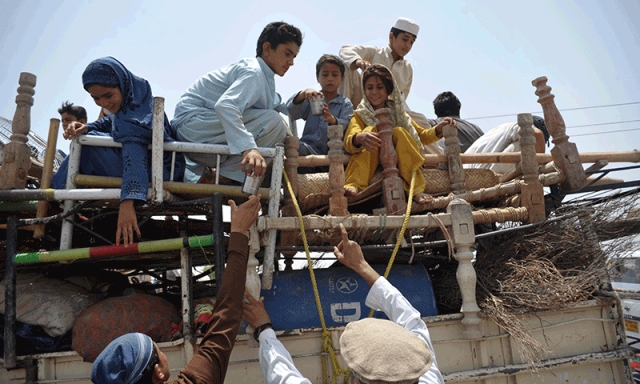Looking after the displaced
There is a need for more transparency regarding the information available on tribal regions & the repatriation process

According to the United Nations Office for the Coordination of Humanitarian Affairs, there has been a virtual halt to the repatriation of residents displaced from South Waziristan. PHOTO: AFP
According to the United Nations Office for the Coordination of Humanitarian Affairs, there has been a virtual halt to the repatriation of residents displaced from South Waziristan. There were a total of 62,000 displaced families from the agency and of these only 3,238 families had returned to their homes by March. Since then, clearance has not been given for anyone else to return and the reasons of the delay remain unclear. Residents displaced from North Waziristan also remain in a flux. At present, 88 per cent of families from Khyber Agency and North and South Waziristan remain displaced, while many wish to go back to their homes because of the poor living conditions at IDP camps. Last week, at least two people were shot dead and 10 others injured after fire was opened at a protest at an IDP camp in Bannu. Such incidents raise questions about how displaced persons are being treated. There seems to be little information about the situation in North Waziristan and the conditions those repatriated are returning to.
While authorities claim there is complete provision of health, education and other necessary facilities in affected areas, there is need for more transparency regarding the information available on the tribal regions and the repatriation process itself. IDPs must mean more than mere numbers to people in other parts of the country.
Published in The Express Tribune, July 3rd, 2015.
Like Opinion & Editorial on Facebook, follow @ETOpEd on Twitter to receive all updates on all our daily pieces.













COMMENTS
Comments are moderated and generally will be posted if they are on-topic and not abusive.
For more information, please see our Comments FAQ